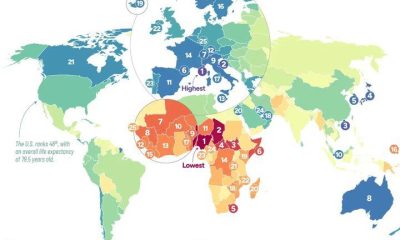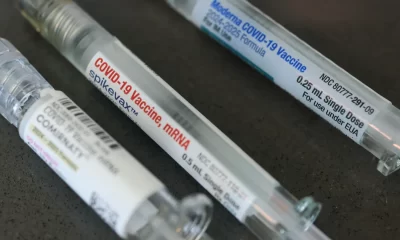Comments and Issues
Black Girls Matter: Speak Up for Our Girls Now
Published
5 years agoon
By
Editor
Adolescent girls live in a better world today but many are still far from safe
By: Niyi Ojuolape
The world has witnessed some remarkable progress in how adolescent girls navigate their lives today. There is a large increase in their access to education, knowledge about their bodies, access to sensitive counselling, and a range of safe and quality contraceptive methods. Importantly also, 25 million child marriages have been prevented in the last ten years, according to United Nations estimates. Moreover, child mortality which is associated mainly with child marriages, has also fallen by more than 50 per cent since 1990. In Sub-Saharan Africa, modest progress has also been made. Female Genital Mutilation has seen a massive and significant decline. In Ghana, 52 communities have been recently declared child-marriage free. A combination of high-level advocacy by the United Nations Population Fund (UNFPA) in partnership with other UN agencies, civil society, government authorities and cultural gatekeepers have led to this remarkable progress. It is also worth remembering how global action as embodied in the ICPD Program of Action in 1994 and the Beijing Platform of Action in 1995 has led to today’s success stories. These were watershed moments that emphasised the interlinkages between the wellbeing of adolescents and development in society.
That said, there is a need to celebrate these milestones with caution, as many adolescent girls are still far from safe. According to a joint press release by UNFPA, UNICEF, WHO, UN Women, the United Nations Foundation and other partners, there were 140 million child marriages between 2011 and 2020. Also, about 3.9 million girls aged between 15 and 19 undergo unsafe abortions while up to 777,000 under the age of 15 in mostly middle or low-income countries gave birth yearly. Ending these anomalies have compound benefits to societies aside delivering hope and optimism in the lives of adolescent girls. It has been empirically determined that communities, where women marry before the age of 18, are less economically prosperous because child marriages disempower the individual and trap them in poverty. There is no doubt that reproductive health education for adolescents will doubtless contribute to good life outcomes. Very importantly, there is a social, moral and economic imperative to end all forms of violence against adolescent girls and ensure that their rights are upheld to the fullest.
Adolescent Sexual and Health Rights (ASHR) are Human Rights
For millions of young people around the world, the onset of adolescence brings not only changes to their bodies but also new vulnerabilities to human rights abuses, especially in the areas of sexuality, FGM, marriage and childbearing. Children forced into marriages face not only severe health risks; they are likely to be exposed to domestic violence as they have less decision-making ability. Among others, their education is obstructed, and they become less capable of determining their future or the wellbeing of their children. A 2017 World Bank study observed that child marriages dramatically reduces the likelihood of girls completing secondary school, and reduces their future earnings by 9 per cent. The impact of lost education, lost earnings and health risks are devastating impacts for child brides.
In patrilineal societies, adolescent girls also face unequal treatment and discrimination, with their male siblings often considered more valuable. With females only regarded as fit for marriage and destined to be part of a new family in the future, their education or material wellbeing is often underplayed or ignored by their families. This situation robs them of their right to equal treatment and increases their vulnerability to unwanted pregnancy, unsafe abortions and sexually transmitted infections (STIs). Empowering young people to know and exercise their rights – including the right to delay marriage and the right to refuse unwanted sexual advances is a paramount obligation for the global community.
Demonstrating what can be done
UNFPA’s global strategy for adolescent and youth, titled, My Body, My Life, My World, is a blueprint to put the unique needs, talents and aspirations of young people at the centre of sustainable development. These commitments are crucial for adolescents, and youth and national governments support their institutionalisation locally. In Ghana, a UNFPA-UNICEF Joint Programme for empowering girls, funded by the Government of Canada has seen significant results. The success of the programme underlines how a multi-sectoral approach can help to lessen the social and economic development of adolescent girls. Working dedicatedly with Faith-based organisations (FBOs) and cultural gatekeepers has been particularly important, as specific solutions can only come by changing the cultural norms that permit certain forms of violence.
Governments and policymakers also ought to show an abiding interest in keeping young girls in school. Anecdotal evidence has shown that each year of secondary school education reduces the likelihood of marrying before the age of 18. By contrast, child brides often drop out of school and become inadequately equipped to enjoy robust economic prospects. A country’s development is usually determined by how to respond to vulnerable groups within society.
In South Asia which has seen the largest decline in child marriage in the last decade, a combination of proactive government policies, increased rates of girls’ education and strong public messaging brought about the resultant laudable changes. The region saw the number of child marriages drop from 50 per cent to 30 per cent in ten years. On account of this, it is in the interest of governments to have a long-term vision (10 – 20 years) on how to remove all possible barriers that prevent adolescent girls from achieving their full potential. As the global burden of child marriages has shifted to Sub-Saharan Africa, governments in the region are encouraged to invest in quality education, invest in reproductive health services, and show dedicated commitment towards tackling FGM and gender-based violence. Crucially also, maintaining access to accurate information on sexual and reproductive health information can stem the problems of trafficking and harmful cultural practices.
On the occasion of the International Day of the Girl Child, let us all join UNFPA to protect the future of the Girl Child by speaking up for her to have and exercise control over her body, her life and her world.
Niyi Ojuolape, UNFPA Resident Representative i
Trending

 Latest1 week ago
Latest1 week agoObasanjo identifies four strategic pillars to tackle Nigeria’s worsening security crisis

 Comments and Issues4 days ago
Comments and Issues4 days agoNigeria’s Life Expectancy as World’s Lowest

 Health5 days ago
Health5 days agoFDA expands probe into COVID-19 vaccine-linked deaths

 News6 days ago
News6 days agoNigeria, China strengthen agricultural ties in Beijing talks

 Latest3 days ago
Latest3 days agoChristmas rush triggers surge in transport fares from Lagos to South-East

 News5 days ago
News5 days agoFoundation commemorates 10th anniversary set to lift Edo indigents economy

 Latest5 days ago
Latest5 days agoEight UNIJOS students, driver killed as trailer crashes into bus

 Labour5 days ago
Labour5 days agoHuman Rights Day: SERAP, NGE decry rising repression of journalists, activists

